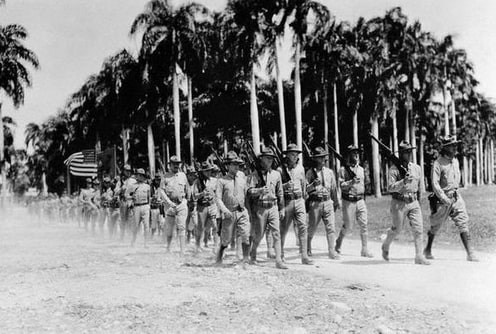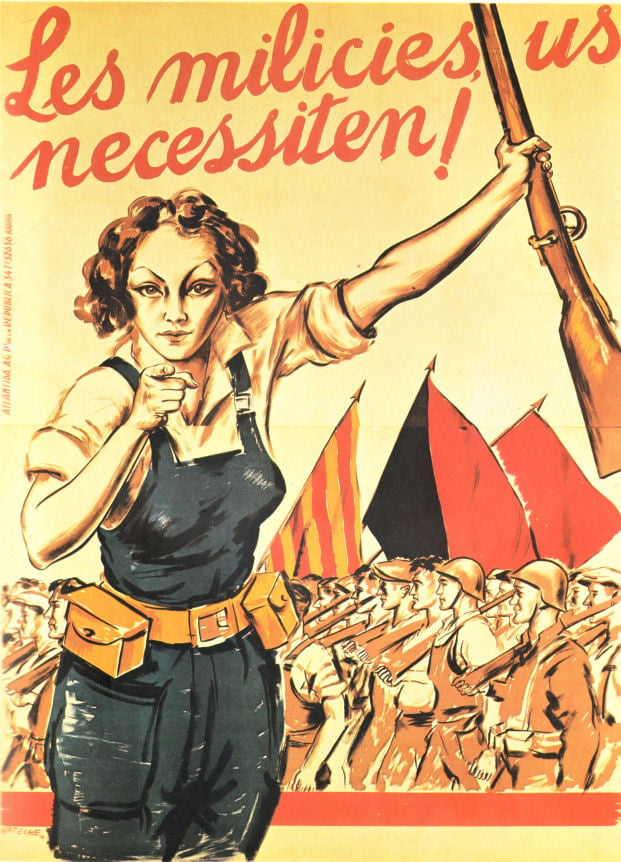U.S. Occupies Haiti (1915)
Wed Jul 28, 1915

Image: U.S. troops marching in Haiti [washingtonpost.com]
On this day in 1915, the U.S. occupation of Haiti began when, on orders from President Woodrow Wilson, 330 Marines landed at Port-au-Prince after the country’s leader was assassinated. The imperialist occupation lasted until 1934.
Haiti had already been suffering from U.S. imperialism and political turmoil prior to the invasion. In 1914, U.S. Marines stole $500,000 in gold from the country’s National Bank. Haiti’s leader, President Vilbrun Guillaume Sam, had also recently been killed by insurgents angered by state-sanctioned murders of his political opposition.
President Wilson ordered the invasion to “protect American and foreign” interests and also wanted to rewrite the Haitian constitution, which banned foreign ownership of land, and replace it with one that guaranteed American financial control. To avoid public criticism, Wilson claimed the occupation was a mission to “re-establish peace and order…and has nothing to do with any diplomatic negotiations of the past or the future”.
When the Haitian legislature refused to ratify a new constitution that allowed foreigners to own land there, the U.S.-backed President Dartiguenave dissolved the legislature and the constitution became law. U.S. occupiers also re-instituted a system of slavery known as civil conscription (“impressed labor”), in which Haitian civilians were captured and forced to work on public projects and established the National Guard.
The U.S. military occupation of Haiti continued until August 15th, 1934. According to the U.S. State Department’s Office of the Historian, the invasion’s result was this: “The United States gained complete control over Haitian finances, and the right to intervene in Haiti whenever the U.S. Government deemed necessary.”
- Date: 1915-07-28
- Learn More: en.wikipedia.org, www.washingtonpost.com, www.studysmarter.co.uk.
- Tags: #Assassinations, #Imperialism.
- Source: www.apeoplescalendar.org
By 1913 four NY banks (NCB, L.Thalmann, Speyer, Hallgarten) held a 40% interest in the stock of the Haitian National Bank. World War 1 was about to begin, and France and Germany still had businesses there.
In December, 2014, NYC banker Roger Leslie Farnham had US marines remove 24,000 ounces of Haiti’s gold (worth $500,000 at the time), put it on the USS Machias and taken to the vaults of the National City Bank of New York (later Citibank) where he was a vice-president. The Haitians were pissed, but Farnham said he did it to protect American interests.
https://sfbayview.com/2010/01/how-the-u-s-impoverished-haiti/
https://www.nytimes.com/2022/05/20/world/haiti-wall-street-us-banks.html
US troops will occupy Haiti from July 1915 to 1934. By June, 1920 Farnham presents himself as president of the unbuilt National Railway of Haiti and ‘chief spokesman for American business in Haiti’.


